The best robot vacuum lets you outsource the chore of cleaning your floors completely. It’ll make its own way around your home collecting the dust and debris from hard floors and carpet, leaving you free to concentrate on other tasks, or even put grab a well-earned rest.
The best robot vacuums employ a range of sensors including lasers, and in some cases even built-in cameras, so they can navigate your home without plunging to the bottom of a flight of stairs, or colliding with furniture.
Many can even avoid obstacles accidentally left on floors, such as charging cables or even dog poop, and simply clean around them. So, you don’t spend your time un-tangling items from the robot vacuum’s brush bar or cleaning up dirt that’s been smeared around your home.
Many robot vacuums are so impressive that we consider them to be among the best vacuum cleaners you can buy right now, in part because they can rival the best cordless vacuums when it comes to suction power and battery life. Some can even empty their own dust canisters, while others can mop as well as vacuum.
Robot vacuums can be great for a daily spruce up of your floors, but for a deeper clean, your existing vacuum cleaner might be a better fit. Ensure your floor cleaning sessions are as efficient as possible by reading our guides on how to vacuum properly and how often you should vacuum.
When it comes to choosing the best robot vacuum for you, you may end up feeling confused as there’s a wide range of models to choose from. Brands such as Roomba and Neato offer an array of models, while the likes of Dyson, Shark, and Eufy all have a number of designs too.
We’ve put a selection of robovacs to the test, collecting fine dust and larger debris from hard floors and carpets you discover the best robot vacuum for 2021.
- Check out our new interactive cordless vacuums video below
The best robot vacuums we've tested 2021: ranked
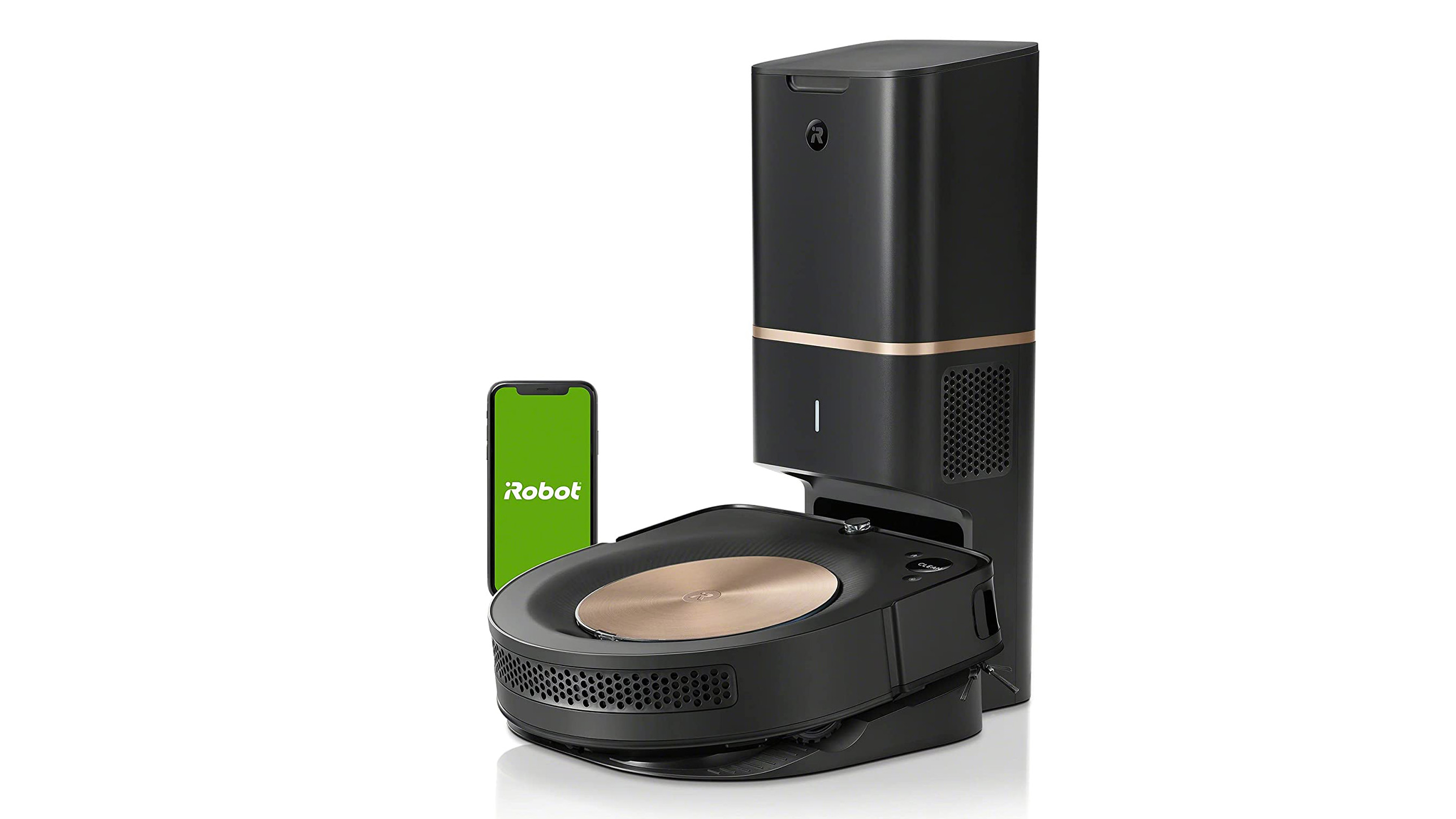
The iRobot Roomba S9+ really is the best robot vacuum you can buy right now, although with such a hefty price tag, it will be out of the reach of some. It is self-emptying and also has five angled arms on its brush to really get into corners and along walls.
Simple to use, the S9+ impressed us when it came to sucking everything from fine dust and biscuit crumbs to cereal on hard floors, although it’s pick-up on carpets wasn’t quite as thorough - although our existing cordless vacuum also struggled to suck up some of the remaining fine dust, suggesting this is deeply embedded into the pile.
The Roomba S9+ is self emptying, and deposits the debris from each clean into the 14.9oz / 440ml replaceable dust bag in the charging and emptying station - meaning you won’t find yourself having to regularly empty the robot vacuum, either. You’ll get an alert on the app when it needs replacing, but at $14.99 / £21.95 / AU$59 for three bags, this creates an ongoing cost for the robot vacuum.
There’s also a filter for allergy sufferers that captures 99 percent of mould, pollen, and dust mite allergens. It’s smart too - mapping your home so it knows every nook and cranny and even offers integration with Amazon Alexa and Google Assistant.
Read our full review: iRobot Roomba S9+
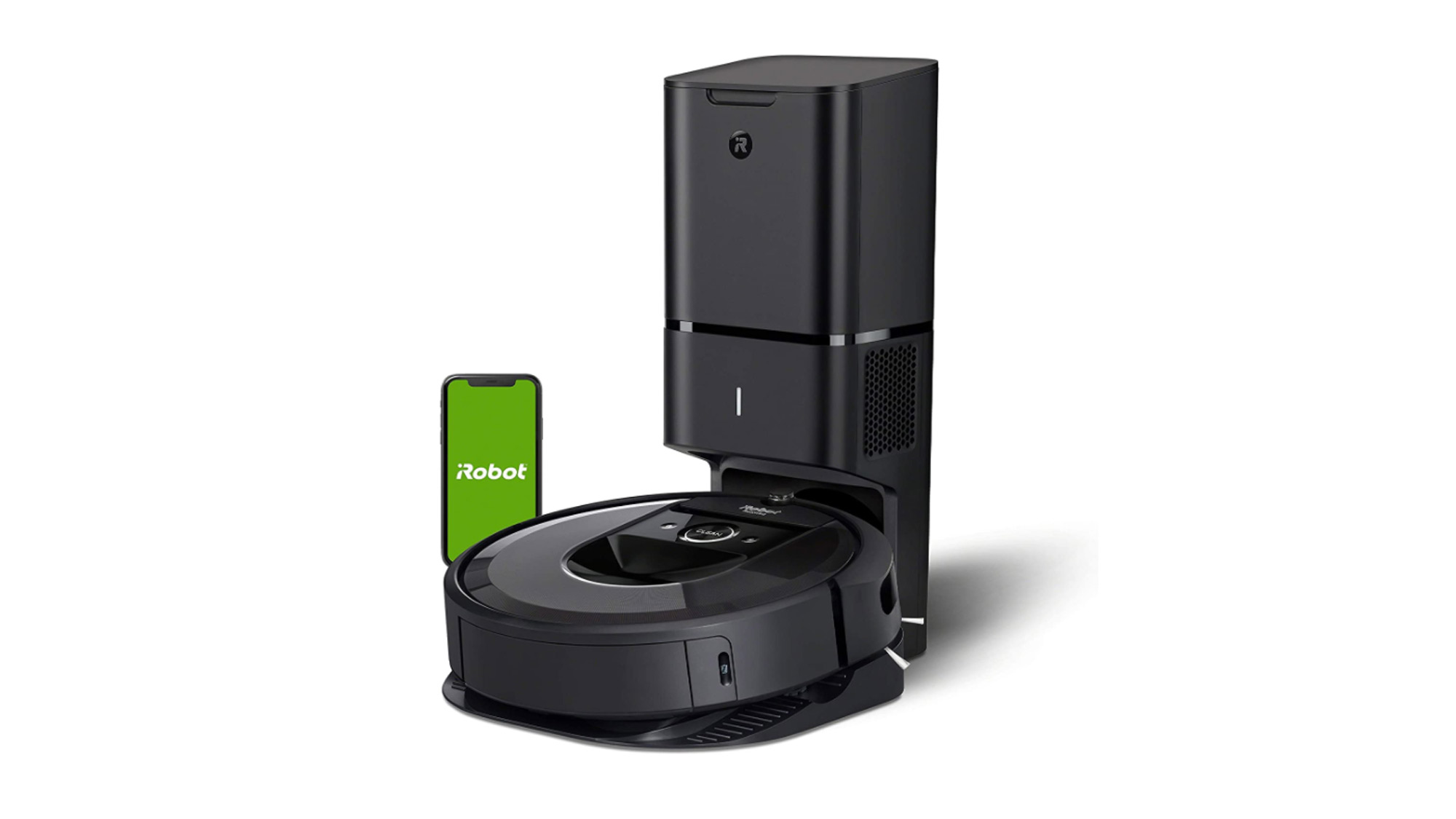
If you want a robot vacuum that's self-emptying but can't quite stretch to the price tag of the Roomba S9+(above) then this model strikes the right balance between price and cleaning power.
The Roomba i7+ is in many ways equal to its bigger sibling - it’s got the same smarts when it comes to mapping your home, and integrates with Amazon Alexa and Google Assistant. It also uses the same large capacity dust bag to ensure you’re only removing all the dust and debris collected around every 30 days.
However, when it comes to suction power it just can’t compete. During testing, we found it was best suited to quick daily cleans, but struggled to remove the level of debris the S9+ could. That said, for most people this robot vacuum strikes the right balance between price and cleaning power.
The replaceable dust bags do mean the robovac comes with an ongoing cost - the bags are priced at $14.99 / £21.95 / AU$59 for three. It also retains the familiar circular design and rotating body found on previous Roomba robot vacuums, so it has no problems manoeuvring through narrow areas.
Read our full review: iRobot Roomba i7+
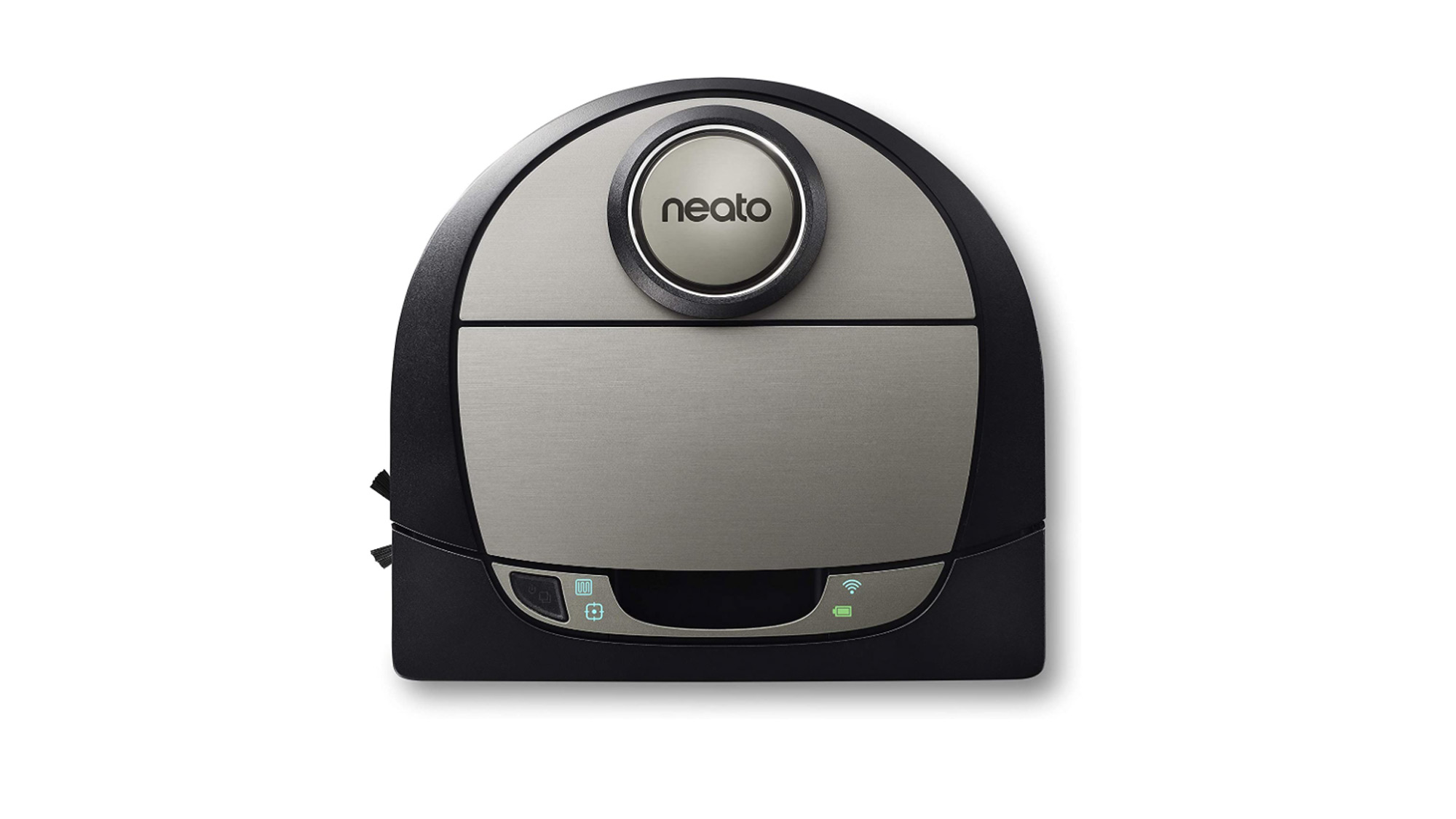
The Neato Botvac D7 Connected is a robot vacuum to rival the Roomba i7+, and we mean that. It's a good-looking vacuum that more than gets the job done, but its laurels don't rest there.
The revelatory feature with the Neato Botvac D7 Connected are so-called 'no-go lines', which allow you to cordon off areas of your home that you don't want the vacuum to venture into. This could be your desk, which is moated by wires that would normally spell treachery for a robotic vacuum.
Creating a boundary for robot vacuums isn't unique to the Botvac D7, but it's really nifty in this application because you can draw a line using the app while the vacuum is in use to, say, keep the D7 from venturing into a room you want it to stay out of.
The biggest drawback with the D7 is that its bin isn't as big as the original Botvac Connected, and it doesn't have a 'bin full' sensor, so it ends up overfilling. The robovac also struggled with edge cleaning
Read our full review: Neato Botvac D7 Connected
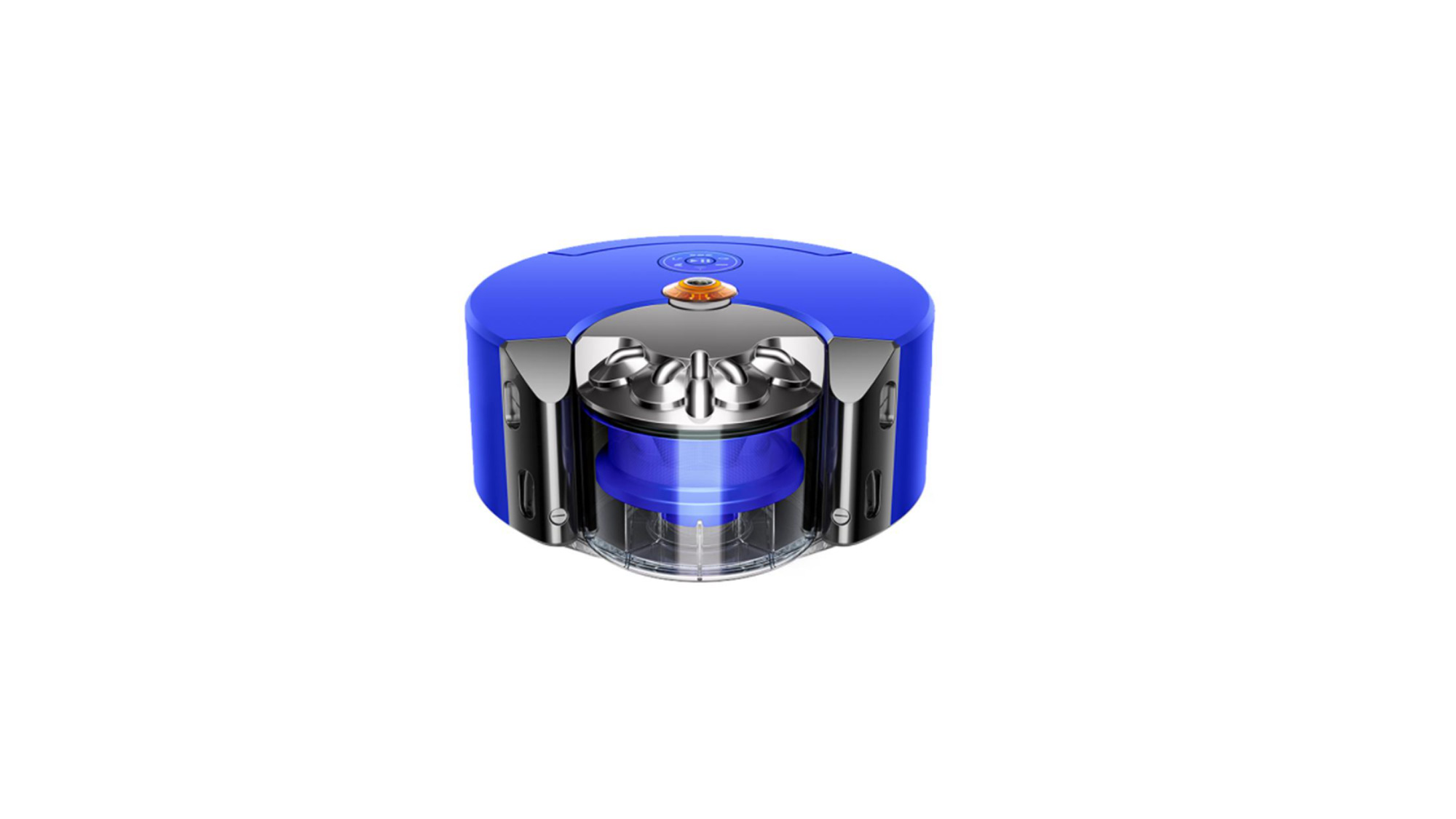
The Dyson 360 Heurist is the first robot vacuum that can really rival a cordless vacuum when it comes to cleaning power. It’s got 20% more suction than Dyson’s previous robot vacuum cleaner, the Dyson 360, and as the motorised brush runs the entire width of the vacuum cleaner, you get full suction power even on the edges of rooms. It’s a narrower design than most robot vacuums, but the trade-off is, its taller too. So while it does a great job at squeezing in narrow gaps, it struggles to get under some furniture.
There’s no denying it’s slow to set-up, as the vacuum uses a camera to map rooms rather than LiDAR but your patience will pay off. Once that’s completed, you’ll be able to split your house into zones and set restrictions such as avoiding altogether, not using the spinning brush bar (good for delicate hard floors and deep pile carpets) and stopping the vacuum from attempting to climb furniture.
It works with both Alexa and Google Assistant, so you can use your voice to start it cleaning. However, it can’t avoid obstacles, such as cables and shoes; so you’ll need to pick these up yourself and on full power, it’s louder than most of its competitors, coming in at around 70db.
Read our full review: Dyson 360 Heurist
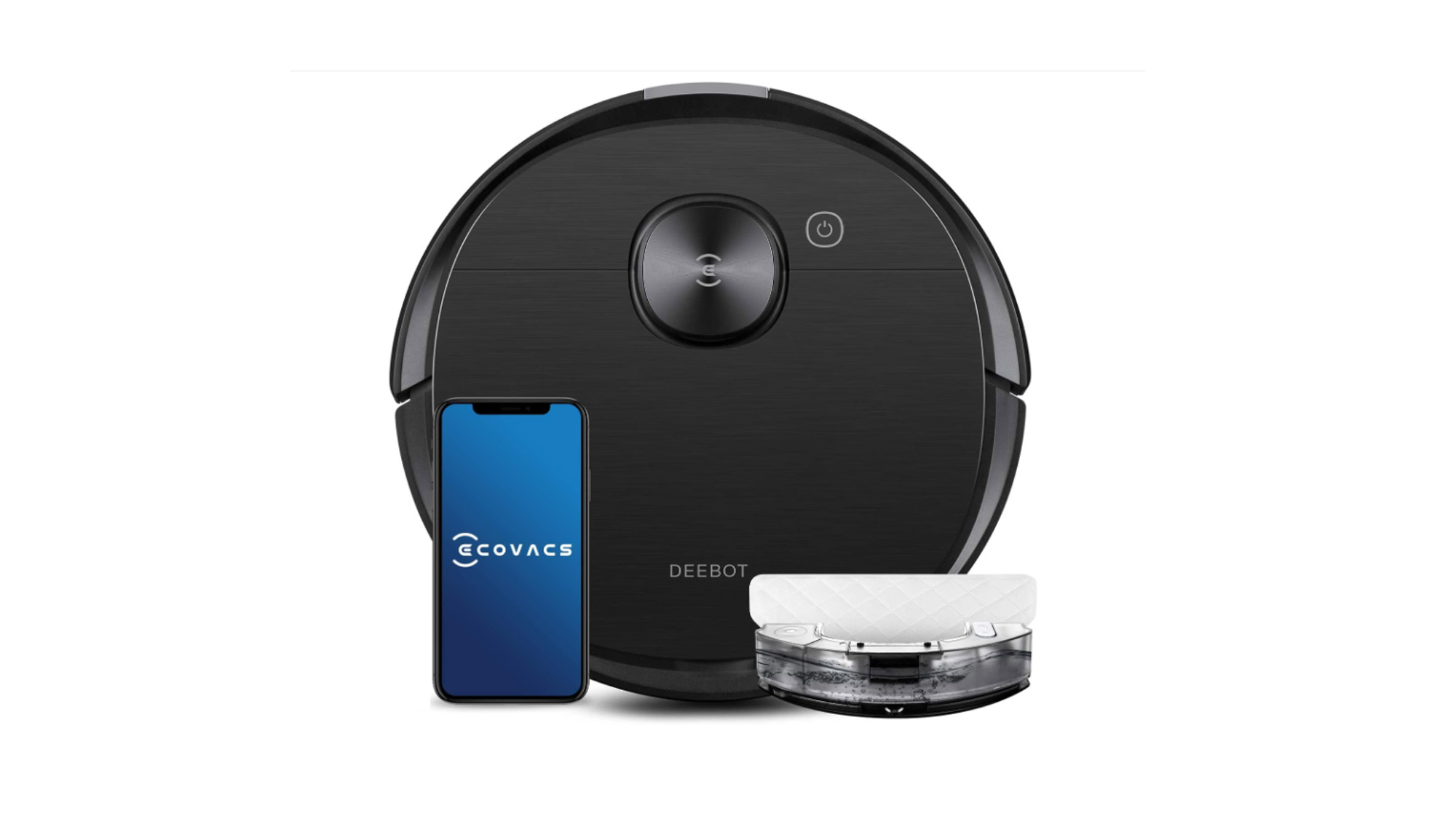
Where the Ecovacs Deebot Ozmo T8 AIVI stands out from the rest of the best robot vacuum cleaners competition is in its ability to mop your floors.
Sure, you won't get an elbow-grease effort out of the robot vacuum cleaner as it slushes water over your linoleum, but it can whisk away footprints and other surface-level stains in a snap. Although, you’ll need to remove the mopping plate when you want it to vacuum carpets.
It’s got a built-in camera designed to help it ‘see’ (and avoid) small objects, like cables, socks or toys - although they can still be sucked up by the vacuum, so ideally pick them up first. When the vacuum isn’t cleaning, you can get it to act as a security guard for your home, letting you see and speak to anyone in the house through the app.
We were impressed by it’s battery life, too. Ecovas claims it’ll last up to three hours, and we found there was still some juice left to spare after it had made its way round an average-sized two-bedroom apartment on the highest suction level.
While we found the dust pick up on hard floors and carpets was good, it tended to misse corners and edges. The mopping function was pretty woeful, too. There’s no scrubbing action, either so it struggles to remove spills and stains.
Read our full review: Ecovacs Deebot Ozmo T8 AIVI
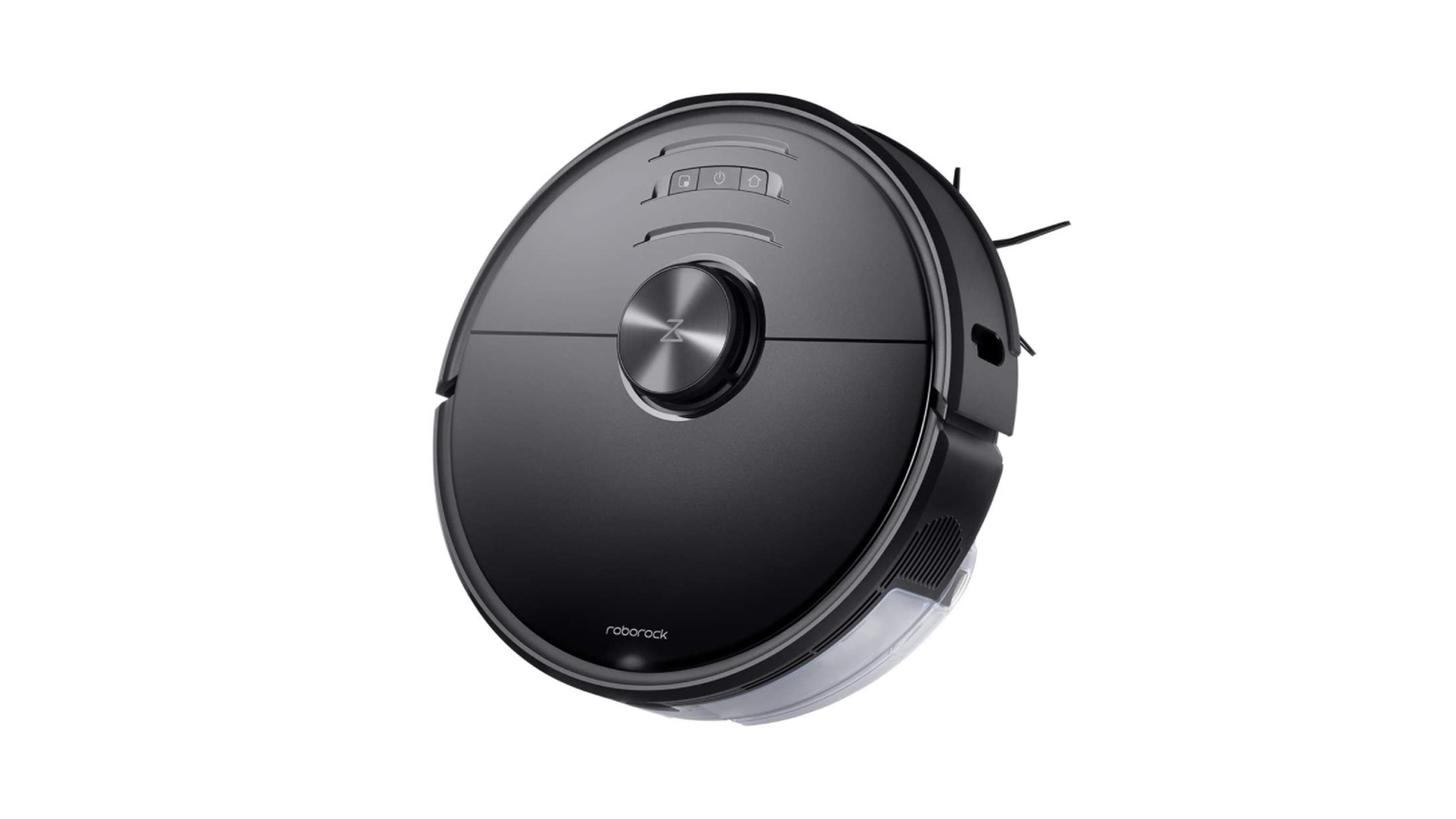
The Roborock S6 MaxV stands out for battery life. Roborock says it will manage up to three hours of continuous cleaning in its least powerful mode. During testing, we used the middle-of-the-road ‘balanced mode’ which meant 30 minutes cleaning over an area of 20 square meters (215 square feet) depleted the battery by 20% - a decent level of performance.
The Roborock S6 MaxV has dual cameras and a LiDAR, so it’s quick when it comes to mapping a room, it’ll even mark obstacles like discarded shoes or furniture on the map, and snap a photo which can be seen in the app. The app even uses AI processing to identify the obstacle, which works most of the time.
We were impressed with its dust pick up on carpets and hard floors - offering similar suction to its competitors. It can mop as well as vacuum, too but its dual function means it’s one of the biggest robot vacuums we’ve tested. At 19.2 x 16 x 6.1in (48.8 x 40.6 x 15.6cm) it takes up a significant amount of space and did struggle to get between chair legs. However, it’s surprisingly quiet in use, making it more of a gentle giant.
Read our full review: Roborock S6 MaxV
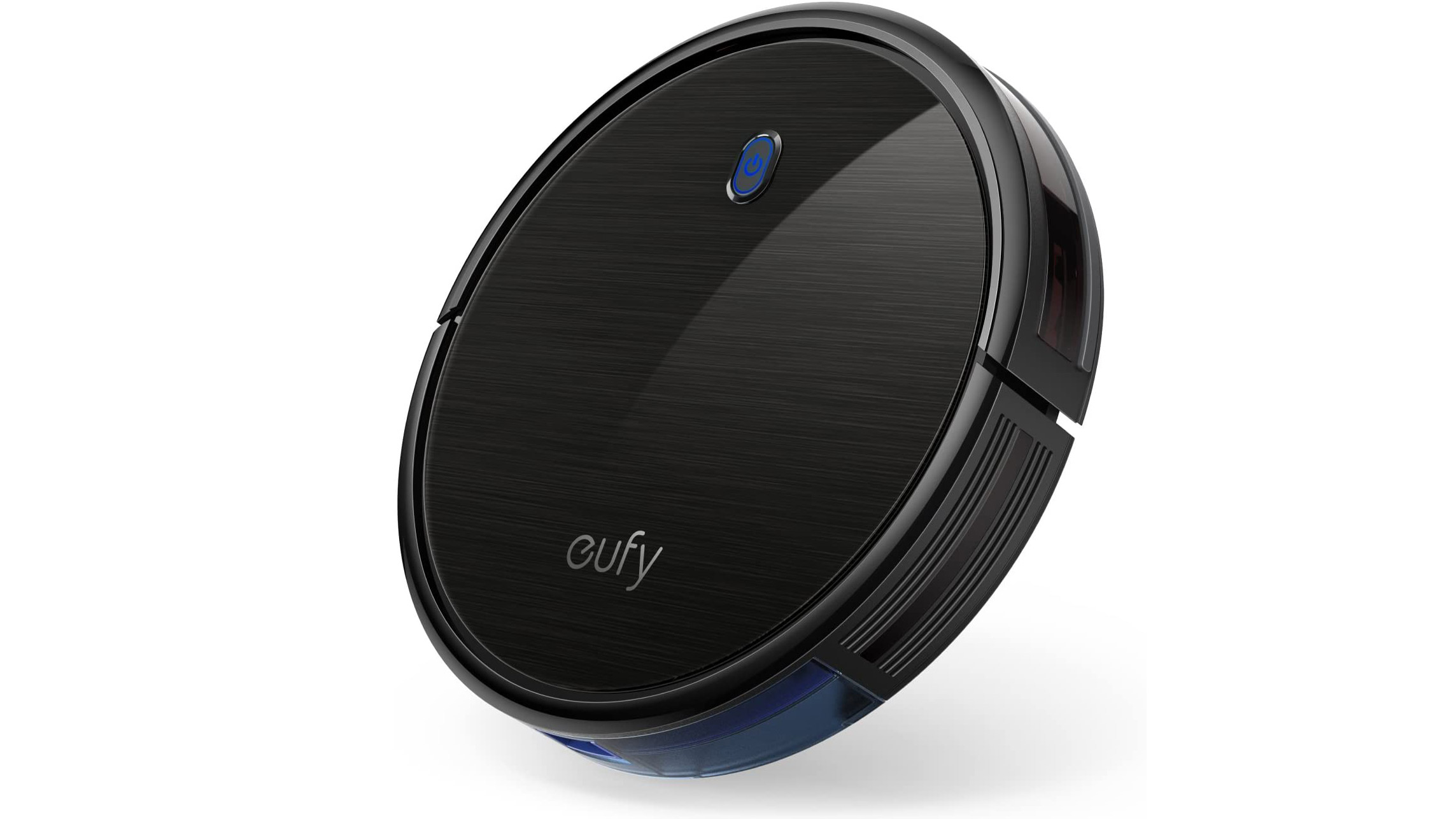
For those seeking a robot vacuum on a budget, the Eufy 11S is worth considering. At $219.99 / £189.99 / AU$229, and often discounted, you’ll be hard pushed to find anything cheaper on the market.
That’s not to say the affordable price tag means compromising on dust pick-up. On test, it picked up dry oats from both a medium-pile carpet and a hard floor with ease and finer dust made from flour and cookies was also no problem for it on a hard floor - although it wasn’t as good on carpets. It’s slim too, meaning it has no problems cleaning under furniture with low clearance. However, with a smaller dust bin compared to other models on the market, and no app control or integration with voice assistants, there are some compromises to be made for the low price - although that will be music to the ears of those that want a simplistic robot vacuum.
It doesn’t take the same logical path around a home when cleaning as other more expensive Eufy models do. Sometimes it’ll go in straight lines and sometimes seek out the edges of a room, while on occasions it’ll travel in circles, which means it may take slightly longer to clean the whole room or floor. It wasn’t always that good at moving around objects – low-level things seemed to fox it the most, such as deep-pile rugs, piano pedals, and pet food bowls.
Read our full review: Eufy RoboVac 11s
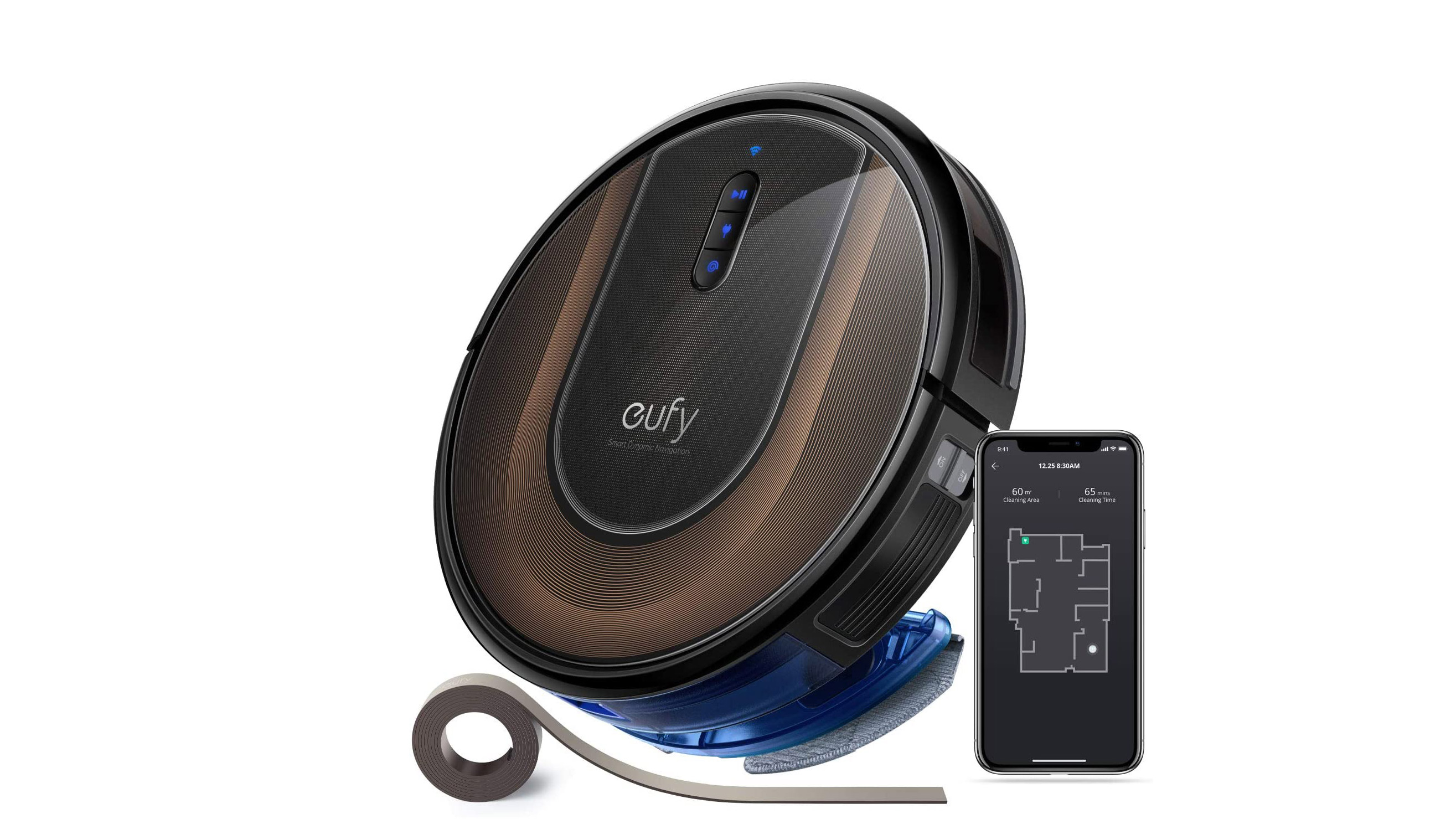
If you love the idea of a robot vacuum that can mop as well as vacuum, but you’re on a budget - this hybrid floor cleaner from Eufy is well worth considering. At just under half the price of the Ecovacs Robovacs that can mop as well - and often discounted - this certainly comes with a more affordable price tag.
On test, the Eufy G30 Hybrid collected fine dust, cookie crumbs and larger debris – including cereal – with ease, even on the lowest power setting from hard floors, although like most robot vacuums it struggled with ground in dirt on carpets. The dust canister and water tank are smaller than on rival models, however we think this is an acceptable compromise given the more affordable price tag.
While the robot vacuum takes a methodical path backward and forward through a room, mapping its path - these can’t be saved for future cleans, so it’s not quite as smart as other robot vacuums we’ve tested.
Read our full review: Eufy G30 Hybrid
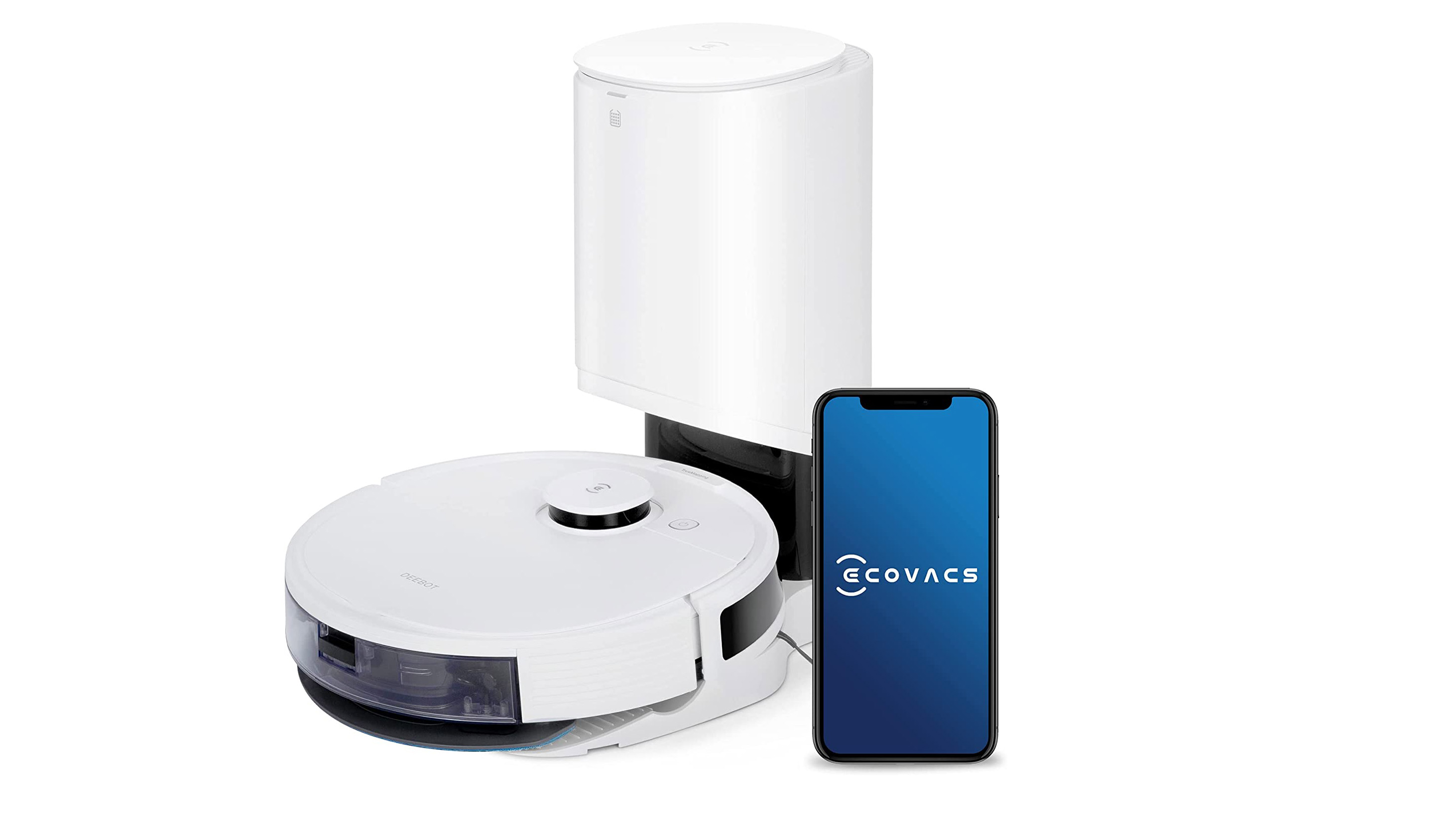
The Ecovacs Deebot Ozmo N8+ can vacuum as well as mop ensuring your hard floors are left sparkling. Just like the Ecovacs Deebot Ozmo T8 AIVI it can also detect carpet, and when it does will stop mopping to ensure your floor coverings don’t end up sopping wet.
However, it builds on this with an Auto-Empty Station and will empty the on-board 14.2oz / 420ml dust canister automatically into a disposable bag after every clean. So you only have to worry about emptying the robot vacuum once a month or so.
We found it sucked up fine dust as well as larger debris on hard floors on the lowest power setting, but required the highest suction setting to remove most visible traces of flour from medium pile carpets. We were disappointed there’s no spot cleaning option either.
We found the robot vacuum became stuck a few times and repeatedly banged into pet food bowls, as it doesn’t have the same level of sensors as found on Ecovacs more expensive models. However, it's a good buy for large homes with plenty of hard floors, and thanks to app control and voice integration, busy families, too.
Read our full review: Ecovacs Ozmo N8+
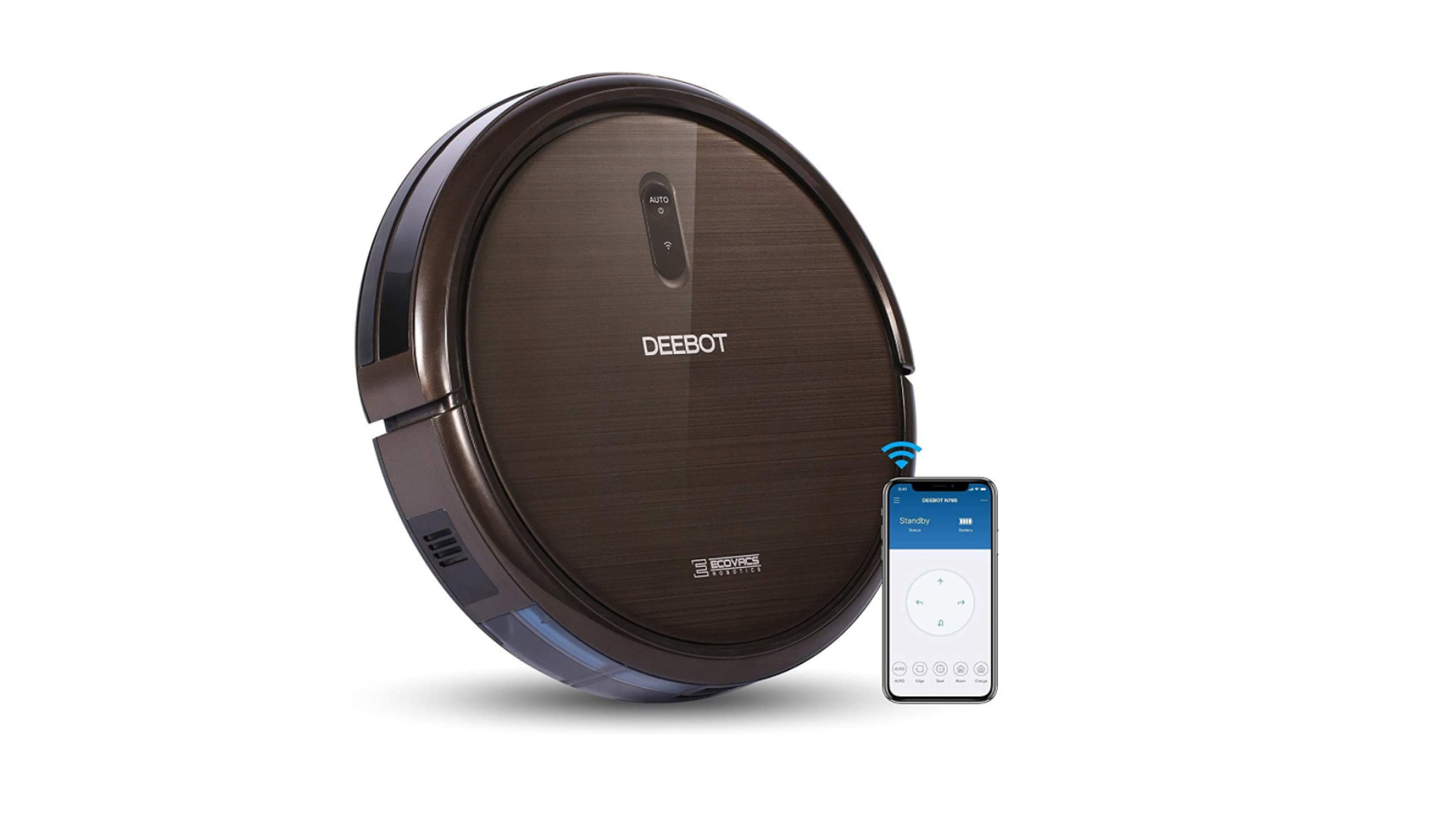
Not all robot vacuums are shiny, whirring pucks from the future. Some, like the Ecovacs Deebot N79S, are more subdued. This isn't an ugly vacuum by any means, but possibly one that's a bit on the plain side. Still, it's really about how it cleans that matters, not how it looks.
You have several modes to choose from with the Deebot N79S, and it comes with a remote that it's quite responsive too. Yes, you can use your smartphone to control the N79S, but the vacuum seems to prefer using the paired remote.
In our tests, we were impressed with the Deebot N79S' ability to not plunge to an early end at the bottom of our steep stairs, so its world-sensing abilities are up to snuff. It did tend to get stuck under furniture, however, so you may come home to find your Deebot wedged under a coffee table, unable to get itself free.
Don't expect a deep clean with this robot vacuum, but it will suck up enough to get surface dirt and dust off of your hardwood floors and carpet. Nicely, the Deebot N79S is rather quiet, making night vacuuming possible.
It's also compatible with Alexa, so you can set the Deebot N79S robot vacuum cleaning using just your voice.
Read our full review: Ecovacs Deebot N79S Robotic Vacuum Cleaner
How we test robot vacuums
To identify the best robot vacuums, we put models from big brands such as Shark, Dyson, and Roomba to the test along with smaller names including Eufy and Roborock. We evaluate the dirt pick-up of each model covering both fine dust and cookie crumbs, along with larger particles including cereal, while also looking at whether its pick-up on edges and in crevices is as good as on large surface areas.
As well as assessing how effectively the robot vacuums clean floors, we also compare how easily they maneuver on carpet and hard floors, as well as whether the robovac takes a logical path around a home or cleans in a random pattern, which means areas could easily be missed. We also looked for robot vacuums that can learn the layout of your home meaning they can be dispatched to clean a certain room or areas in just a few taps.
We rate each robot vacuum on how easy it was to empty, how loud it is in use, and how long the battery lasts between charges, too.
What to consider when buying a robot vacuum cleaner
What to consider when buying a robot vacuum
There are a number of aspects you should consider when choosing the best robot vacuum cleaner for you.
As well as deciding on whether you want a robovac that just vacuums or one that mops as well, it’s also important to consider battery life, as nobody wants a robot vacuum that runs out of power halfway through cleaning your home. Similarly look for robot vacuums that have large dust canisters, or those that empty their own dust bins, meaning it really can be left to clean your floors unaided.
Some robot vacuums take a methodical path across your floors which ensures the vacuuming process is quick and efficient. However, these tend to be more expensive than robot vacuums that employ a random route when cleaning your floors.
Also, look for a smart mapping feature that ensures the robot vacuum learns the layout of your home and can clean specific rooms or areas at the touch of a button, and those that allow you to set no-go areas that the robot vacuum won’t even attempt to clean - ideal if you have teenagers, which leave their clothes all over their bedroom floor.
Can a robot vacuum replace a normal vacuum?
Robot vacuums can offer a very impressive clean, even on thick carpets which makes them a good alternative to an upright or other types of vacuums. They’ll be more convenient too as you can set them to work when you’re busy doing other things. The dust cups on robot vacuums are often smaller than you’d expect to find on a canister or an upright vacuum cleaner.
While robot vacuums don’t have crevice tools that work well down the side of your sofa or on your stairs, these machines do normally have small brushes on the outside of their shells. The brushes do a good job of getting close to baseboards and making sure that any crumbs or dirt on hard floors doesn’t escape the vacuum’s suction.
Is it worth buying a robot vacuum?
In short, yes. Robot vacuums can be more expensive than an upright or cordless vacuum but you’re paying for the added convenience of not having to do the vacuuming yourself. Robot vacuums are a great solution for busy people who simply don’t have time to put the vacuum around but they also offer a good alternative for those with mobility issues because all you need to do is switch them on.
Many robot vacuums cope well with both hardwood floors and carpeted areas but if your home has lots of staircases then, you’ll need an additional vacuum to clean the stairs. With many robot vacuums suitable for programing from your phone, you’ll be able to switch these devices on when you’re out and about and come home to clean floors.
How do robot vacuums work?
Robot vacuums have a series of brushes on the underside of the machine that work together to collect dirt and dust that they come in contact with. The dirt is then sucked up into the dust cup, which is fitted in the body of the vacuum. Most are fitted with smaller brushes that extend past the circumference of the vacuum and the purpose of these is to reach dirt that’s settled against baseboards or in awkward places.
More advanced robot vacuums have lasers on the front of the machine and some on the underside of the machine too. These lasers detect where furniture, objects, and edges are in your home helping to avoid bumps and cliff detection prevents the machine from falling down the stairs. Read our article How do robot vacuums work to find out even more.
- Don't miss today's cheap robot vacuum deals
from TechRadar - All the latest technology news https://ift.tt/37d9FvY

No comments:
Post a Comment